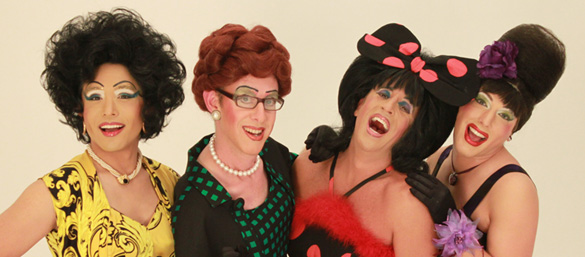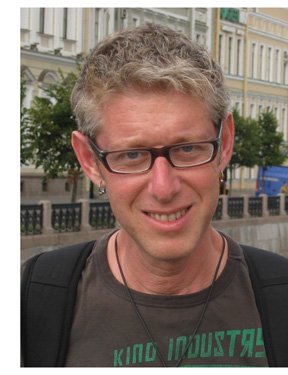Kant buy me love
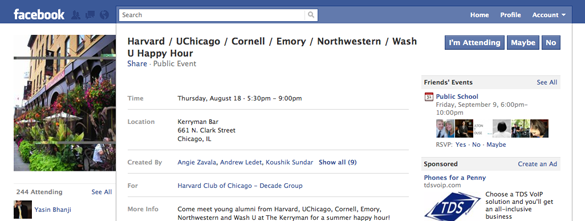
One U of C student's quest to find out just how pretentious an alumni happy hour could get.
By Christina Pillsbury, '12
The Facebook wall for the “Harvard/UChicago/Cornell/Emory/Northwestern/Wash U Happy Hour” event page displayed the usual “I have a boat cruise that night... but hope you guys have a good turnout!” “Bummer, out of town still—next one for sure!!!!,” (yes, with four exclamation points), but there was one stand-out comment: “I cannot wait to hang out with people equally as pretentious as me!!!” (only three exclamation points). I was intrigued.
And so my quest for the evening was to find out how pretentious the conversation could get. Coordinator Tim Richards, AB’07, told me that eventually, as more drinks get consumed, students will commingle, the maroon will bleed with the crimson, and hopefully, some alumni might actually "score some dates," he said. "You’d be surprised at how many schools need help with that. It’s hard after college to pick someone up in a bar and talk about the Odyssey."
I heard him loud and clear: I have been known to blabber on about Foucault’s theories of authorship after a few drinks and it’s not generally an effective way to pick up men.
At the Kerryman bar Chicago happy hour, I started at the outskirts of the crowd, making the rounds to all the different schools. For some reason, many students were not keen on talking to a strange girl without a name tag who was writing down everything they said. Also, eavesdropping was hard in a bar filled with almost 100 people talking about what I hoped was the Odyssey. I would have also taken the Illiad.
But, sigh, for the first hour I heard nothing of the sort. Alumni stood in circles with their fellow college-mates—the drinks were mixed, but the alumni were not. I approached a few groups, and none were talking about anything of substance. As an arrogant U of C student, I was starting to get impatient.
I interrupted a conversation between Mary Potkonjak and Emily Wolodiger, both AB’11, regarding employers’ misconceptions about U of C women. “If they know the prestige of the University of Chicago, they expect you to know everything,” Wolodiger said. “If they don’t, they just assume you went to a state school.” Which, as every U of C student knows, is the worst thing anyone can think about you.
I was getting there. Things were getting slightly pretentious, but not close to what I was hoping for. I was thinking that it's possible that U of C alumni, perhaps, aren't what their reputation suggests.
Then I got to talking with Eric Blaschke, AB’06, MD’10, who was perturbed that the U of C students weren’t all cowered in the corner, isolated from the crowd, muttering to one another. Then he launched into a diatribe about how he expected the conversation to turn that evening, it seemed quite reasonable: “I assume that these U of C alumni will only discuss Kant in its original German. That seems pretty reasonable, maybe Aristotle in its original Ancient Greek.” He realized there should be a compromise; “I suppose it won’t get that pretentious; it will probably fall somewhere between Kant and Greek, though.” It's difficult to tell just how sarcastic his comment was.
My night ended with familiar faces: former Chicago Maroon editors—including former Magazine intern Asher Klein, AB’11—some of the most pretentious people at the University. Former sports editor Nick Foretek, AB’11, strutted in carrying Charles Dickens’s Bleak House, with a smug look on his face which negated any need for words. And finally, a former Maroon news editor, who preferred to remain nameless, said she could “come to this bar and find all the pretty people, and then see all the U of C people.”
And that, ladies and gentleman, is the type of sarcastic, self-deprecating, pretentiousness I was looking for that evening. Challenge complete.
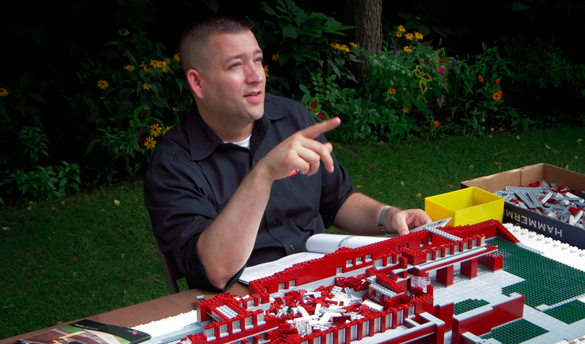
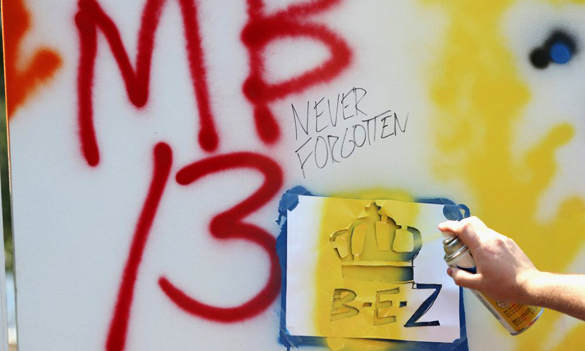
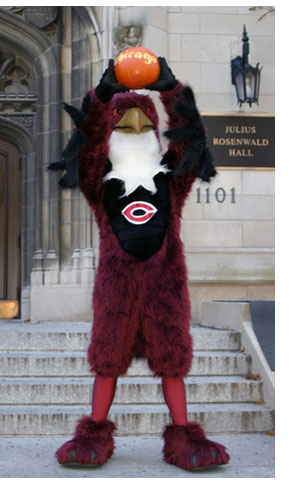 Alumnus talks about his time playing the part of the U of C's mascot, Phil.
Alumnus talks about his time playing the part of the U of C's mascot, Phil. Did you show any signs as a child that indicated a future career as a mascot?
Did you show any signs as a child that indicated a future career as a mascot? Throughout my childhood I was shy, deathly afraid of crowds or large groups of people, a super-nerd who was not at all dancer-ly, and the last person on earth you would ever expect to do any of the things I have done over the past three years as our mascot. But it wasn’t until I got to high school of all places that, supported by my classmates and teachers, I really got comfortable enough with myself to do that. I came out of the closet in tenth grade, which stands in for just a total transformation over my first two years of high school that released publicly the gregarious extrovert I had been on the inside for so long.
Throughout my childhood I was shy, deathly afraid of crowds or large groups of people, a super-nerd who was not at all dancer-ly, and the last person on earth you would ever expect to do any of the things I have done over the past three years as our mascot. But it wasn’t until I got to high school of all places that, supported by my classmates and teachers, I really got comfortable enough with myself to do that. I came out of the closet in tenth grade, which stands in for just a total transformation over my first two years of high school that released publicly the gregarious extrovert I had been on the inside for so long.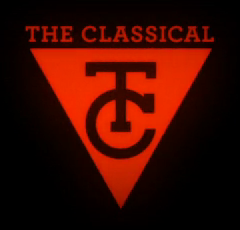 If the idea doesn't sound UChicago, the pitch sure does. Pete Beatty, AB’03, and Tom Gaulkin, AB’04, are helping to start The Classical, a website dedicated to smart, sophisticated sports writing. On board is a host of writers and bloggers who have written for everything from McSweeney's to SLAM, and who have story ideas that range from a piece on David Foster Wallace's relationship with tennis to an exposé on Jason Giambi's offseason entertainment.
If the idea doesn't sound UChicago, the pitch sure does. Pete Beatty, AB’03, and Tom Gaulkin, AB’04, are helping to start The Classical, a website dedicated to smart, sophisticated sports writing. On board is a host of writers and bloggers who have written for everything from McSweeney's to SLAM, and who have story ideas that range from a piece on David Foster Wallace's relationship with tennis to an exposé on Jason Giambi's offseason entertainment.